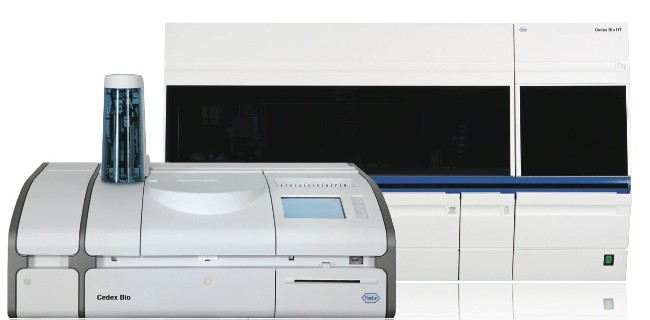
The Benefits of Implementing Bioprocess Monitoring and Quality by Design in Process Development
Biomanufactuing processes are becoming increasingly complex, due in part to the increasing demands placed on biomanufacturing. There is a push to lower development and manufacturing costs while also increasing the number of products manufactured in a facility and to increase the speed at which this happens. To keep up with these needs there must also be regular improvements in manufacturing efficiency. This has driven innovation in these areas and has also expanded what is possible in terms of bioprocess monitoring and a gaining a better understanding of the biomanufacturing process.
As a result of these improvements, the more traditional approach to process development is being replaced by a more modern approach. The modern approach gathers more data throughout the process and uses this information not just to inform, but also to make real time changes to the process. Overall this creates a more flexible, data driven approach.
Bioprocess Monitoring to Enable Quality by Design
An example of a modern approach to process development was nicely covered recently in a webinar titled “The Future of Bioprocess Monitoring: How Greater Precision Can Improve Quality and Yield.” The webinar was jointly presented and featured the collaboration between Bayer Technology Services, AGU, and Roche Diagnositcs to improve bioprocess monitoring. In addition to covering some of the challenges summarized above, the presenting companies examined the use of analytical tools to inform process development and enable implementation of a Quality by Design (QbD) approach with the goal of attaining high quality, consistent and high yield biomanufacturing.
In the webinar, process development challenges are discussed along with corresponding solutions. One of the biggest challenges with a more traditional or static process development strategy is that quality attributes are not tested until the process is complete, this eliminates the ability to identify the problem early enough to correct it and also prevents process parameters from being clearly defined. The lack of clearly defined parameters often results in much variation both in process and results. The presenters favor a QbD approach that provides a systematic look at process development, which attempts to predict unique challenges and address them in advance. To achieve this, process parameters must be identified and monitored throughout the process. However a difficulty in this approach is determining the critical process parameters. One way to do this is to examine the process through robust bioprocess monitoring.
The webinar then walks through the results of the companies’ collaboration on bioprocess monitoring. They also present their answer to the question of how to quickly, easily move to a more flexible, informed QbD approach using integrated in-process analytics. To achieve this, certain tools are necessary, primarily you need to frequently collect and analyze data about the cells during the process. Key components of this monitoring include obtaining sterile samples with a high degree of automation, gathering analytics on cells and product quality and an automated way to manage all the data.
Sterile Sampling
For sterile sampling, Bayer Technology Services presented their BaychroMAT product that provides fully automated and scalable sterile sampling for monitoring of product quality and process attributes. The biggest challenge with sampling is to maintain sterility while obtaining samples. Bayer Technology Services achieves this either through steam sterilization in stainless steel bioreactors or ethanol sanitation for glass and single-use technologies. Once the sample is collected, it is delivered to a sample prep unit where the sample can undergo sample dilution or the addition of reagents. The samples can then be transferred to a cell counter or tape filtration for further processing.
This approach supports a QbD approach by providing more frequent sampling, anytime 24/7 and on weekends. This high density of data permits a better understanding of process dynamics. This also allows automated monitoring and control of certain process parameters. For instance, one example given during the webinar addressed glucose monitoring and automated control based on a set of parameters for glucose levels.
Analytics
Roche Custom Biotech then presented their family of Cedex Analyzers that can be integrated with the BaychroMAT to conduct the analytics on collected samples. There is a wide range of items that can be tested using Cedex Analyzers and only a small sample volume is required for testing. Roche has demonstrated that high quality, high reproducibility can be achieved using a very small sample size. Small volume is critical in an integrated process where samples will be collected regularly.
Collected analytics can then be used to create prediction models to aid in the QbD approach and also provide for enhanced process control. This can only be achieved in a system that has a high level of accuracy and reproducibility. The analytics can also be used to conduct media studies where metabolites or supplements are examined at various levels for their effect on the process so that an optimal mix can be obtained. This is a very cost effective and efficient way to screen media components and can significantly add to process development. Image based cell diagnosis can also provide valuable information on viable cells, dead cells, particles and cell aggregates.
Data Management
Lastly, AGU discussed their Sm@rt Line Data Cockpit software, which provides a central web and database-based platform for collecting all of the data from analyzers in one system. It eliminates the need to gather data and enter it manually. This is critical because with frequent data collection the information must be easy to collect, manage and organize. This is a key component to being able to make informed process changes or decisions based on the data. The information can then be exported to Excel, thus providing paperless management.
Summary
There are several options for putting together a bioprocess monitoring system. For anyone interested in learning more about process monitoring, I would recommend this webinar as a guide of the benefits of this type of bioprocess monitoring and also key tools and considerations for moving forward.